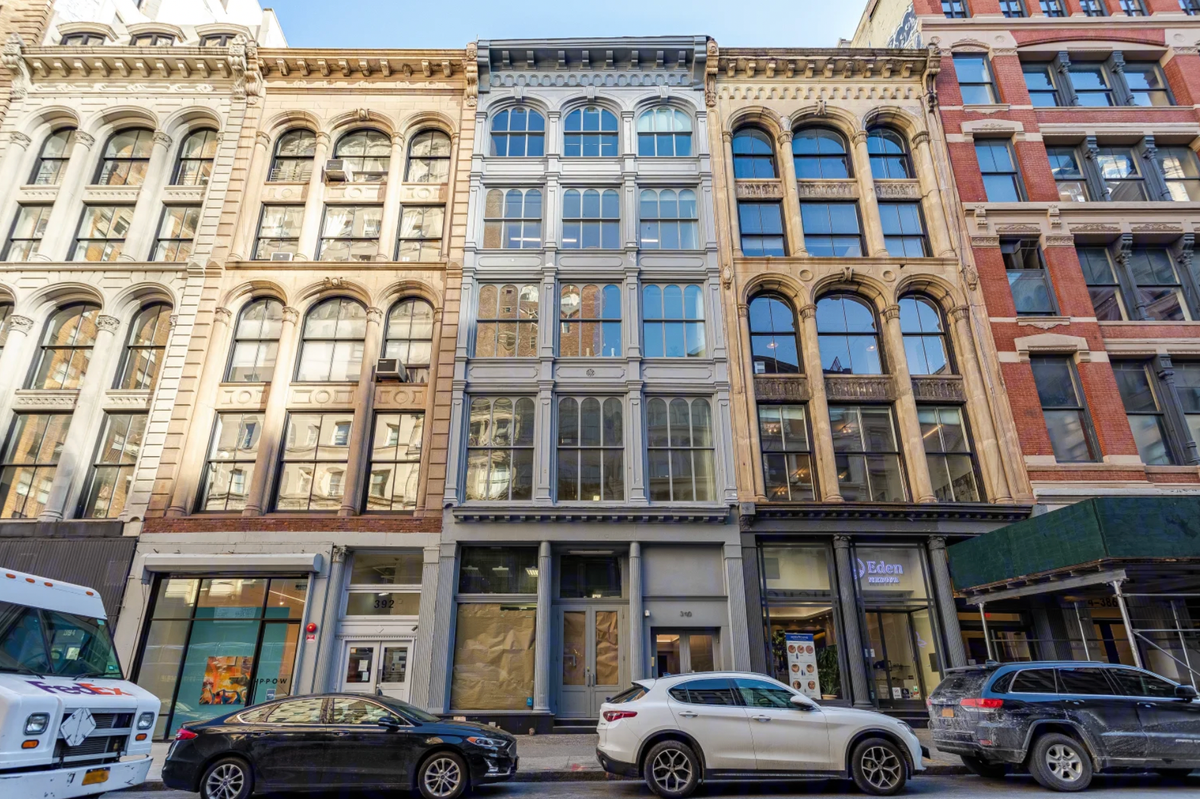
Onassis ONX, an experimental new media studio, is moving from Midtown Manhattan into a new space in Tribeca that will double its footprint and allow it to better serve artists working with new media like extended reality and artificial intelligence technologies.
The studio has announced that, in January, it will relocate from a 3,500-square-foot space in Olympic Tower on Fifth Avenue to a new 6,000-square-foot home in 390 Broadway, which also houses PPOW and Matthew Brown Gallery.
“Don't get me started on how we convinced them to finally move downtown, because they really loved their fancy Fifth Avenue location,” managing director Matthew Niederhauser told Urgent Matter. He suggested that what helped seal the deal was that ONX is getting twice the space for “practically the same price” as its current Midtown home.
“I will miss it, to a certain extent,” he said. “But we're really entering into a new, awesome phase of how we operate, and where we are, and how we can better serve a larger community of artists and institutions in this new space in Tribeca.”

The experimental studio is wholly supported by the Onassis Foundation, a global cultural organization headquartered in Athens with a mission rooted in culture, health and education. It has long supported the arts through commissions, residencies and other programming, with deep roots in contemporary theater and performance.
Five years ago, the organization’s artistic director, Afroditi Panagiotakou, began exploring what gaps Onassis could help fill, concluding that artists working with advanced technologies were the future of creative expression but were in particular need of space, resources and a community to build work.
In response, the Onassis Foundation partnered with the New Museum’s NEW INC incubator to create ONX Studio, announced in 2020 as a pilot program offering mixed reality artists a place to “develop, beta test and demo” their works. ONX has since evolved into a powerhouse accelerator for artists using XR and other new media.
“Because we are an accelerator, we're not a space that teaches you from zero how to make this work, we really want to accommodate artists who have a foundational and important understanding of how they can make the kind of work they want to make, and then we help them enhance that,” Jazia Hammoudi, the program director for Onassis ONX, told Urgent Matter.
“But we design membership to be indefinite because we know that art using advanced technologies is labor-intensive. These projects take a long time to develop. We didn't want to be more of this kind of factory structure, though there are many residencies who do operate exclusively on a short term.”
Over the years, ONX realized that people weren’t using it as a co-working space, Niederhauser said. Instead, artists would visit for focused production sprints, which opened up how ONX thought about its mission.
“We've found artists are, like, herding cats. If you think you're going to get 85 people in there, every day, working nicely at their laptops, it's just not going to happen,” he said.
He said that when ONX first launched with about a dozen members, “it would sometimes be crickets,” and he had to explain to Onassis leadership that “this is not how artists operate.”
Because artists were coming in for short, high-intensity production sprints rather than daily desk time, ONX realized it could support far more artists overall by expanding its membership, now with 85 member artists globally.
It also began offering fellowships with partner institutions that would grant artists access to space for shorter durations. The three- to six-month fellowships now also serve as a pipeline for future membership selection.
But Hammoudi said that, as ONX grows, another important mandate also developed — consulting with and supporting major global cultural institutions to adapt their infrastructure or build resources for artists working in advanced technologies.
“We realized we could really help larger institutions, who, quite frankly, always are trying to approach digital works and installations, but don't have the infrastructure or capabilities, and that's become this really major second pillar,” Niederhauser added.
Since then, ONX has collaborated with institutions from Lincoln Center and Pioneer Works to the MIT Open Documentary Lab and produced projects that have shown at the Venice Biennale and major film festivals including Cannes, SXSW and Sundance.
Niederhauser said he often gets questions from major cultural institutions trying to figure out how to sustainably invest in hardware and infrastructure to support such XR artists and stay relevant, which feels like a constantly shifting landscape as technologies develop.
“We invest a lot in hardware. But there are some pieces of that puzzle that remain consistent, like great sound technology has not changed much in the past few decades,” he said.
“Yes, there are shifts in projection and LED walls, but we still do a lot of damage with projectors and LED walls we've had for the past few years, and that's maybe a capital investment that comes up every once in a while.”
In terms of his “healthy” equipment budget, Niederhauser said ONX invests significantly in its computers and sensor technology for motion tracking, among other equipment. But such investments are led by the desires of what the studio’s member artists want, then he makes that available to the whole community.
“If you’re a larger institution, there is potentially a large upfront investment, but the maintenance and staying relevant, largely, right now, comes from computers, software, and sensors, which are not large capital expenditures,” he said.
“But we're a little bit of a blueprint … constantly honing that strategy, but it's doable. You can stay on top of this fast-changing tech landscape and still present cutting-edge, impactful art.”
Sign up for Urgent Matter
Breaking news, investigations and feature articles touching the art world written by Urgent Matter journalists.
No spam. Unsubscribe anytime.
The new space will be organized much like its current space, with three main working areas for artists: a motion-capture stage, an immersive sound room with a 7.1.4 Dante-enabled sound system, and a projection room, Niederhauser said. But now, each will be twice the size.
“We will have a lot of computational power for A.I.-focused works, and A.I. is starting to really have a presence in people's creative practices,” he said.
The Tribeca location is also being designed as a true hybrid space for both artistic production and as an exhibition and community space, Hammoudi added.
“We really want to be a space where you can be cross-disciplinary easily and naturally, and encouraged to be cross-disciplinary, and where you can encounter other artists doing similar things,” she said.
“We're working with a lot of screen-based artists who now want to build performance into their works. We're working with musicians who want interactive installation elements, so the studio is, we're proud to say, one of few that's really built for that inter-discipline.”
It was also important for ONX to move into “the cultural heart of New York,” where it is now surrounded by blue-chip galleries and galleries for emerging artists, Hammoudi added. When ONX is settled in after its move, she plans to “invite all the neighbors in to meet us” to “break down some of these barriers” faced by artists using experimental media.
In January, a debut exhibition, “TECHNE: Homecoming,” will inaugurate the Tribeca space with a group of six installations and immersive activations by several artists that explore “how identity is shaped through biological, mythological and digital kinships.”
Artists featured in the exhibition include Andrew Thomas Huang, who has collaborated with Björk and FKA twigs, MoMA-exhibited artist Tamiko Thiel and self-taught microbiologist Sister Sylvester.
